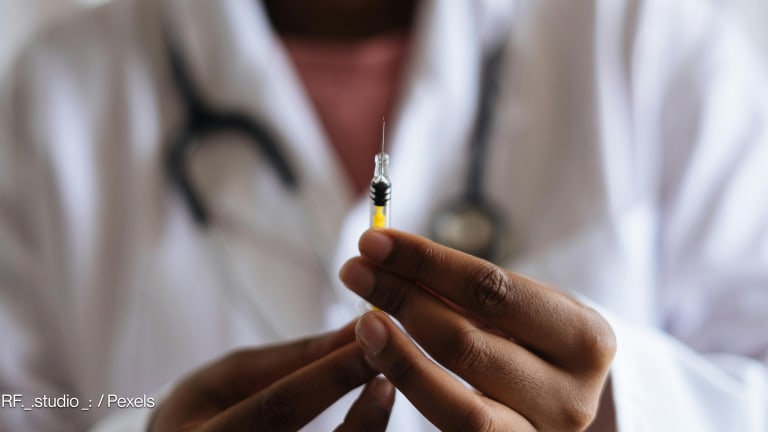
While HIV self tests have been out of reach for many due to high prices, a new deal — made possible through innovative financing — aims to increase accessibility.
MedAccess, a social finance company, and the Clinton Health Access Initiative, have negotiated with manufacturer, Wondfo, to bring the tests down to $1 per test — which makes this test the most affordable of the six HIV self-tests on the market that the World Health Organization has prequalified. Wondfo will make this test available at this price for public sector purchasers in 140 low- and middle-income countries.
The must-read weekly newsletter for exclusive global health news and insider insights.
“The announcement of the new pricing is an important step toward making HIV testing for diagnosis and prevention monitoring accessible worldwide. It will help programmes deliver HIV self-tests in public, community, and private sector service delivery channels,” wrote Meg Doherty, director of WHO Global HIV, Hepatitis and STI Programmes, in a press release.
The negotiated price is 30% lower than the lowest price of any WHO prequalified tests, and 50% lower than the most widely used tests available on the market, according to the release. To make this happen, MedAccess has provided a volume guarantee, which means if sales fall short, the company will pay Wondfo to cover the shortfall.
The organizations hope the lower price will enable major purchasers of HIV tests including the United States President's Emergency Plan for AIDS Relief and the Global Fund to Fight AIDS, Tuberculosis and Malaria to increase procurement of this tool.
Testing for HIV is crucial as it prompts those who are positive to get on treatment, preventing the advancement of the disease. It is also crucial in prevention — treatment can help someone reach an undetectable viral load, preventing them from passing the virus along to their partner. Broadening access to tests also helps to scale up the use of preexposure prophylaxis, used by people who are negative for HIV to prevent infection, as tests are needed before starting the program, accompanied by regular testing.
Still, about 5.9 million HIV positive people don’t know their status. One of the barriers to testing in low-resource settings is that health facilities are often far away from people’s homes, requiring them to take time off of work, often to wait in long queues when they arrive. There is also stigma, discrimination and even criminalization associated with accessing HIV tests for some of the high-risk groups, such as men who have sex with men, and sex workers.
Self-tests, which people can take at home, provide convenience, privacy, and reduce the burden on health care workers. They can be distributed more broadly — by people without medical training, such as community organizers. But while WHO prequalified self-tests have been available since 2017, they have been unaffordable for many people compared to the low price of tests administered by health care workers. The price of HIV self-tests ranges from $1.50 to $3.59.
“In Uganda, the high price of HIV self-test kits has previously been a barrier to expanding HIV self-testing in both public and private sectors despite the country having approved more than two HIV self-test products,” wrote Dr. Geoffrey Taasi, program officer of HIV testing and counseling at Uganda’s Ministry of Health, in a press release.
Fifty two countries have implemented HIV self-testing, and it's estimated that major donors and governments procured over 10 million of these self-tests in low- and middle-income countries last year.
MedAccess estimates that at this negotiated price, 8.1 million people will use the test over five years.









